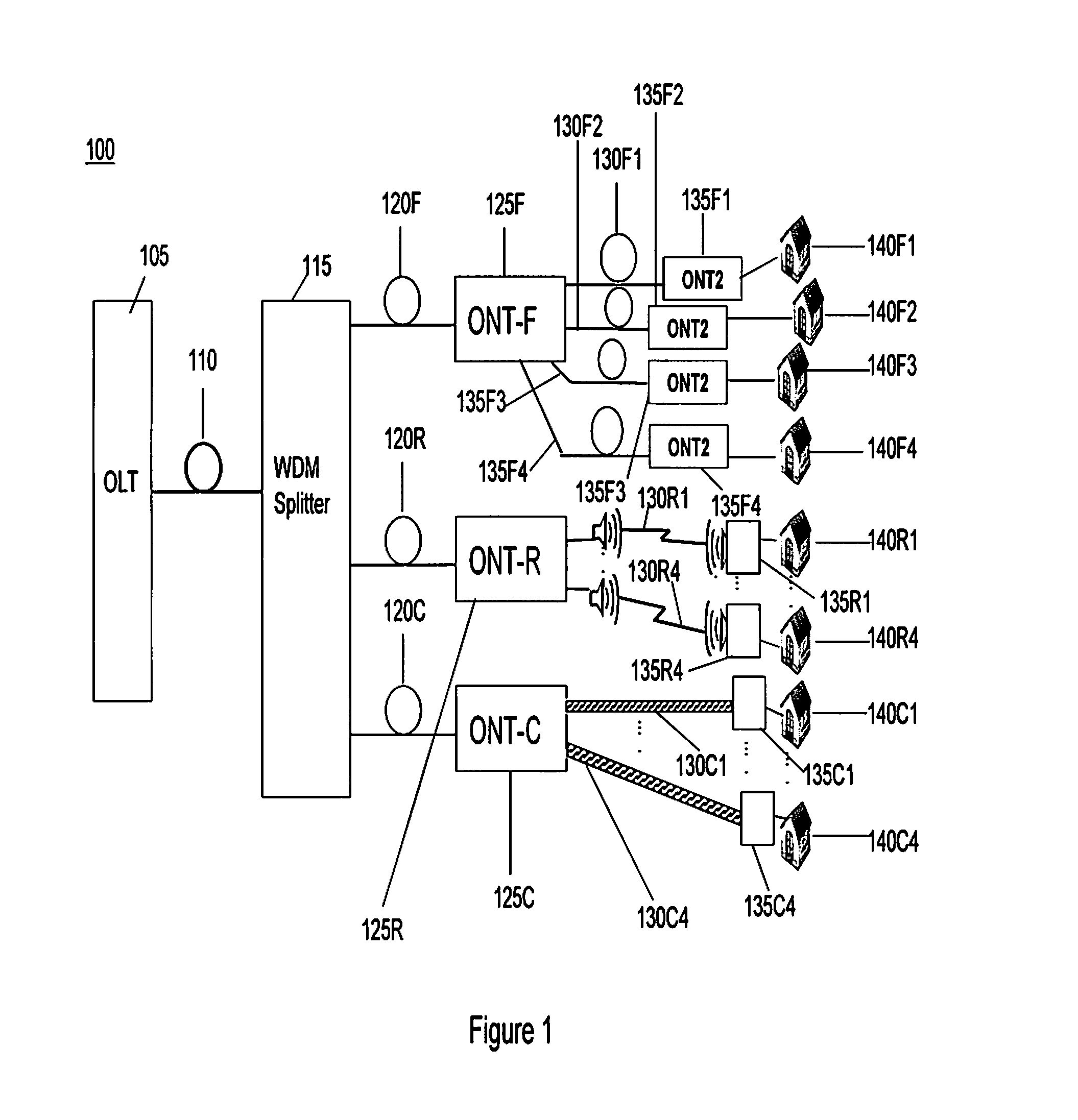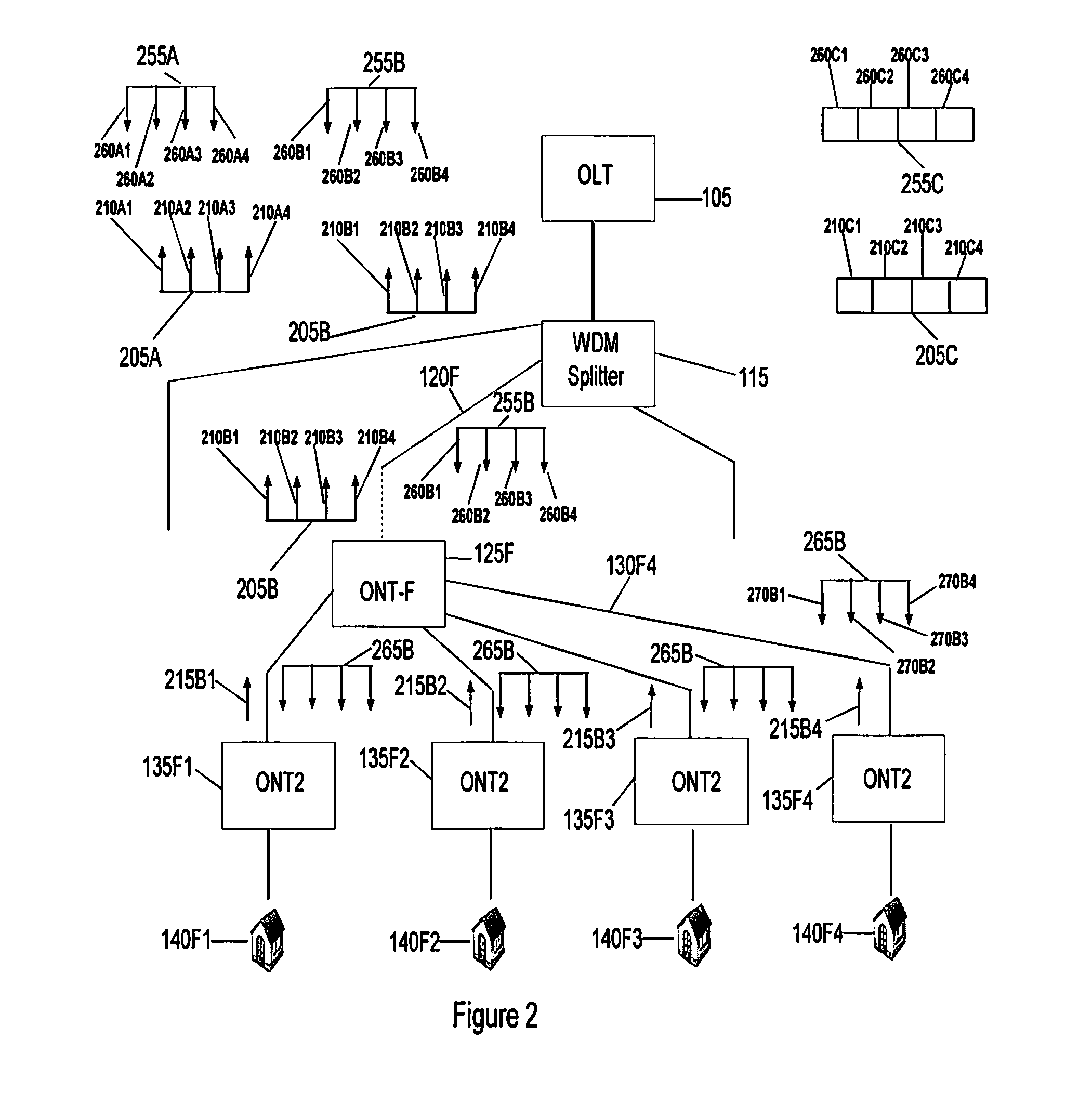Improved Optical Access Network and Nodes
a technology of optical access network and node, applied in the field of optical access network, can solve the problems of limiting the cost effectiveness of extending the fibre, limiting the ability of access networks and maintaining low overall cost of access networks, so as to increase the capacity of a new or existing optical access network, the cost of reducing the cost of installing a high-bandwidth optical fibre to carry a small part of shared bandwidth is minimised
- Summary
- Abstract
- Description
- Claims
- Application Information
AI Technical Summary
Benefits of technology
Problems solved by technology
Method used
Image
Examples
Embodiment Construction
[0022]Referring to FIG. 1 a Passive Optical Network (PON) 100 is shown and which comprises an Optical Line Terminal (OLT) 105 coupled by an optical fibre 110 to a Wavelength Division Multiplex (WDM) splitter 115, and a number of Optical Network Terminals (ONT) 125F, 125R and 125C coupled to the WDM splitter using respective optical fibres 120E-120C. Each ONT 125F-C is coupled to a number of subscriber equipment 135F1-135F4, 135R1-135R2, and 135C1-135C2 respectively. These subscriber equipment may be coupled to their respective ONT using optical fibres 130F1-130F4, radio links 130R1-130R4, or copper cable 130C1-130C4. Each subscriber equipment may be installed within a respective subscribers premises 140F1-140C4 to service a number of communications appliances such as telephones, computers, or televisions. Alternatively one or more of the subscriber equipment may support communications appliances in a number of subscriber's premises.
[0023]It can be seen that, compared with known PON ...
PUM
 Login to View More
Login to View More Abstract
Description
Claims
Application Information
 Login to View More
Login to View More - R&D
- Intellectual Property
- Life Sciences
- Materials
- Tech Scout
- Unparalleled Data Quality
- Higher Quality Content
- 60% Fewer Hallucinations
Browse by: Latest US Patents, China's latest patents, Technical Efficacy Thesaurus, Application Domain, Technology Topic, Popular Technical Reports.
© 2025 PatSnap. All rights reserved.Legal|Privacy policy|Modern Slavery Act Transparency Statement|Sitemap|About US| Contact US: help@patsnap.com



